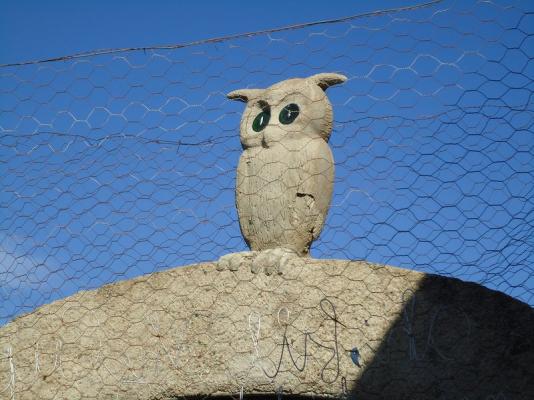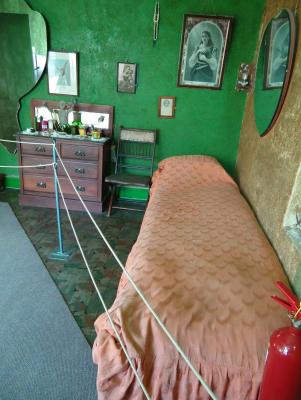

Helen Martins, or "Miss Helen" as she was known to the locals in Nieu Bethesda , spent the latter part of her life in the house where she was born.
According to sources, Martins became bored with her "dull" life and resolved to transform the environment around her. She began to decorate her home and garden using cement, glass and wire to decorate the interior of her home and later build sculptures in her garden. Almost all the walls of the interior of the house were covered in decorative and colourful crushed glass.
In 1964, she was joined in her work by a Coloured man named Koos Malgas, who helped her build the sculptures in her garden. The relationship between Malgas and Martins drew considerable suspicion from the small-town locals in apartheid era South Africa.
Martins drew on inspiration from Christian biblical texts, the poetry of Omar Khayyam and various works by William Blake. The sculptures were predominantly owls, camels and people, mostly pointing toward the east as a tribute to Martins' fascination with The Orient. Her work was a source of suspicion and derision within the village and during her time, Helen Martins received very little support or enthusiasm about her work.
She lived a hermit-like existence, devoting her life to her beloved Owl status, and "the search for light and brightness". From the moment you step into the house you are enveloped by lots of colour, where the walls, ceilings and even doors are decorated with finely-ground glass of various hues.
In the "Camal Yard" at the back of the house, trapped by a stone wall and high chicken-wire, are hundreds of figures, camels and sphinxes, made of cement and glass, all paying homage to the East.
The story of Helen Martins life was the inspiration of Athol Fugard's book "The Road to Mecca".
Her lifelong exposure to the fine crushed glass she used to decorate her walls and ceilings caused her eyesight to start failing in 1976. She committed suicide on August 8, 1976 by ingesting caustic soda, aged 78.
The Owl House has since been kept intact as a museum per Helen Martins' wishes and is now managed by the Owl House Foundation.

















